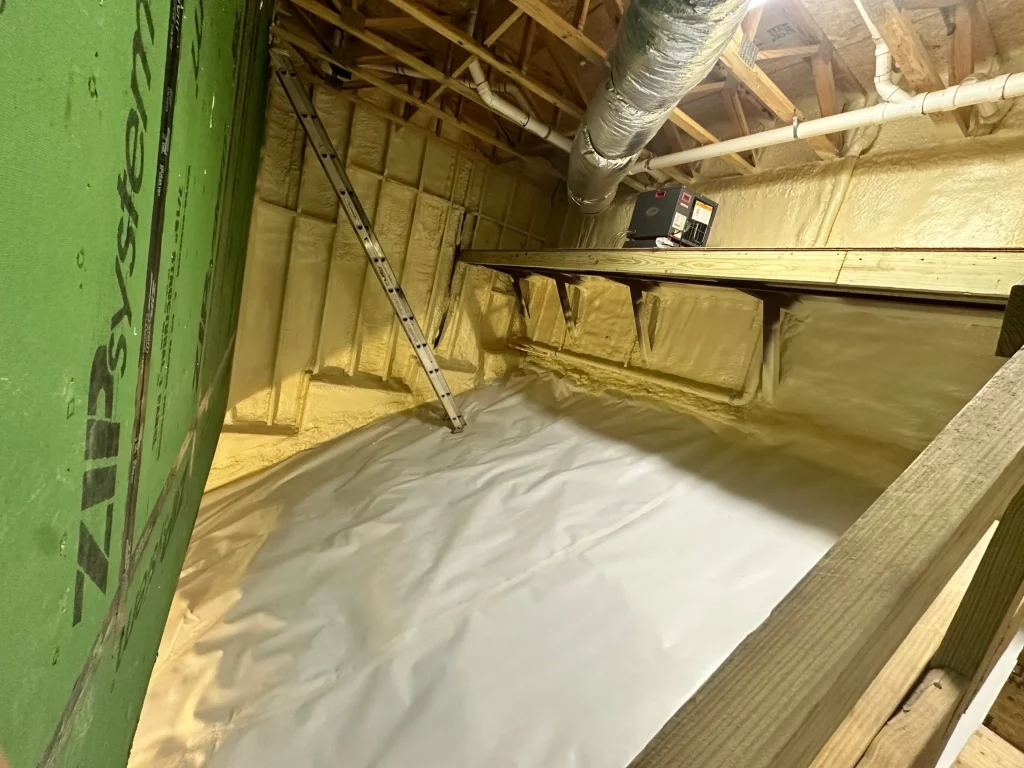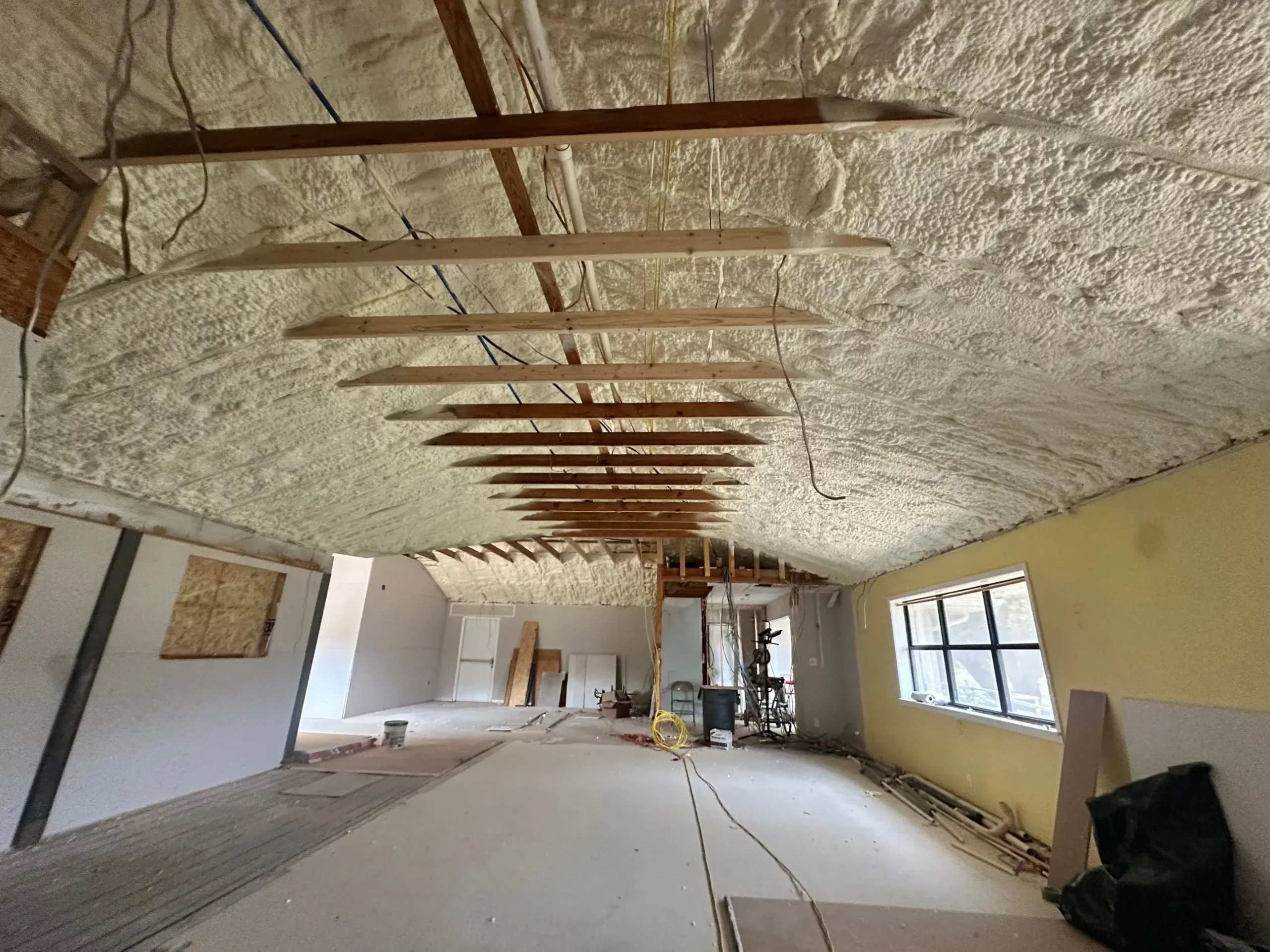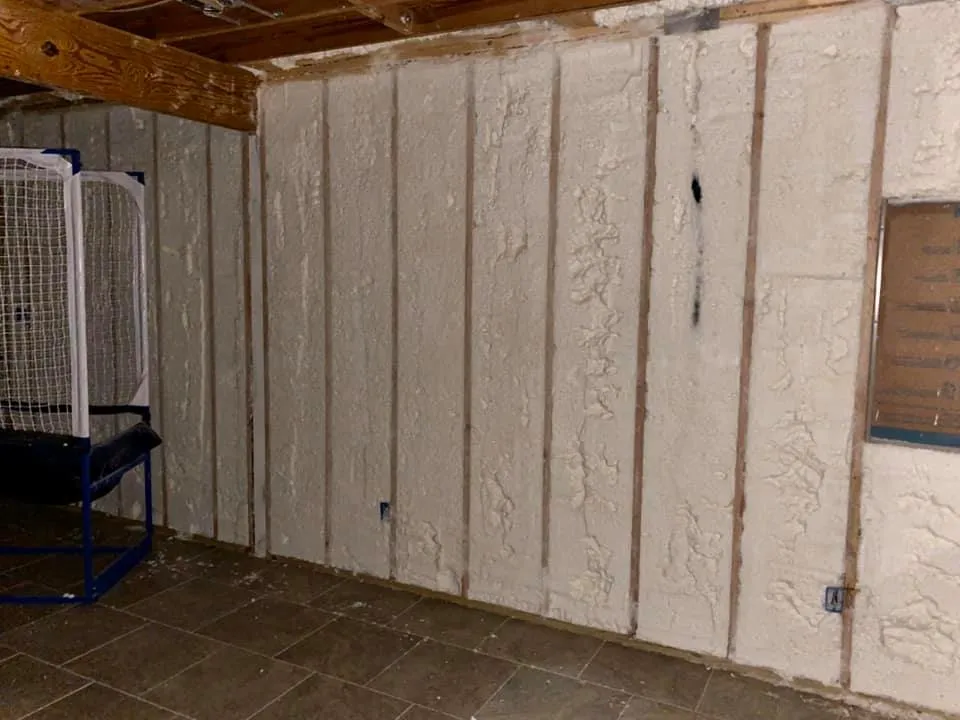Commercial insulation directly reduces HVAC energy consumption by 20-40% through thermal barrier creation that prevents unwanted heat transfer. Properly installed insulation maintains consistent indoor temperatures, reduces equipment runtime, and eliminates energy waste through building envelope leaks. The thermal resistance provided by commercial-grade insulation materials creates a stable environment that allows HVAC systems to operate at peak efficiency rather than constantly compensating for temperature fluctuations.
Buildings with inadequate insulation force HVAC systems into continuous operation cycles, dramatically increasing energy consumption and equipment wear. Professional insulation installation creates measurable improvements in system performance, with building owners typically experiencing reduced utility bills within the first month of completion.
Understanding Thermal Performance in Commercial Buildings
Commercial buildings lose energy through six primary pathways: walls, roofs, floors, windows, air infiltration, and thermal bridging. Insulation addresses four of these pathways directly by creating resistance to heat flow. The R-value, or thermal resistance rating, determines insulation effectiveness – higher R-values provide greater thermal protection and improved HVAC efficiency.
Air infiltration represents a significant challenge in commercial spaces, often accounting for 25-35% of total heating and cooling loads according to the Department of Energy. Quality insulation installation seals gaps and creates continuous thermal barriers that prevent conditioned air from escaping and unconditioned air from entering.
Bonus Tip: Conduct thermal imaging surveys during peak heating or cooling seasons to identify insulation gaps and thermal bridging issues. These weak points often appear as temperature variations on building surfaces and indicate areas where HVAC systems work hardest.
Insulation Performance by Material Type
| Material Type | R-Value per Inch | Air Sealing Properties | Moisture Resistance | Commercial Applications |
|---|---|---|---|---|
| Closed Cell Spray Foam | 6.0-7.0 | Excellent | High | Roofs, walls, foundations |
| Open Cell Spray Foam | 3.5-4.0 | Very Good | Moderate | Interior walls, attics |
| Cellulose | 3.2-3.8 | Good | Low | Attic spaces, wall cavities |
| Fiberglass Batts | 2.9-3.8 | Poor | Low | Standard wall assemblies |
| Rigid Foam Boards | 4.0-8.0 | Moderate | High | Exterior sheathing, roofs |
HVAC System Benefits from Proper Insulation
Insulation reduces HVAC operational stress through three primary mechanisms: load reduction, runtime optimization, and equipment longevity. Load reduction occurs when insulation prevents thermal transfer, requiring less energy to maintain target temperatures. Runtime optimization happens as systems cycle less frequently due to improved temperature stability.
Equipment longevity improves significantly in well-insulated buildings. HVAC components experience fewer start-stop cycles, reducing mechanical wear and extending service life by 15-25% according to ASHRAE studies. This translates to lower maintenance costs and delayed replacement schedules.
Commercial buildings with comprehensive insulation systems typically achieve 1-3 degree temperature stability compared to 5-8 degree swings in poorly insulated structures. This consistency allows HVAC systems to operate in their most efficient ranges rather than peak demand conditions.
Climate-Specific Insulation Strategies
Building location dramatically affects insulation requirements and HVAC efficiency gains. Hot climates prioritize cooling load reduction through roof and wall insulation, while cold regions focus on heating efficiency through comprehensive envelope sealing. Mixed climates require balanced approaches addressing both heating and cooling demands.
Bonus Tip: Install radiant barriers in addition to traditional insulation in hot climates. These reflective materials reduce radiant heat gain by up to 97%, significantly decreasing cooling loads during peak summer months.
Southern commercial buildings benefit most from roof insulation upgrades, as solar heat gain through poorly insulated roofing can increase cooling loads by 40-60%. Northern buildings achieve greater efficiency improvements through wall and foundation insulation that prevents heat loss during extended heating seasons.
Energy Consumption Analysis
| Building Size | Without Proper Insulation (kWh/sq ft/year) | With Professional Insulation (kWh/sq ft/year) | Annual Savings Percentage |
|---|---|---|---|
| Small Office (5,000 sq ft) | 15.2 | 9.8 | 35% |
| Medium Warehouse (25,000 sq ft) | 8.7 | 5.9 | 32% |
| Large Retail (50,000 sq ft) | 12.4 | 8.1 | 35% |
| Industrial Facility (100,000 sq ft) | 18.9 | 12.3 | 35% |
Data sourced from the Commercial Buildings Energy Consumption Survey shows consistent energy reduction patterns across building types and sizes when professional insulation systems are properly installed.
Things to Consider Before Insulation Installation
Building age significantly impacts insulation strategies and expected efficiency gains. Structures built before 1980 typically lack adequate thermal barriers and require comprehensive upgrades, while newer buildings may need targeted improvements in specific areas. Existing HVAC equipment capacity must align with post-insulation building loads to prevent oversized systems that cycle inefficiently.
Moisture management becomes critical during insulation upgrades. Improper vapor barrier placement can create condensation issues that damage building materials and reduce insulation effectiveness. Professional assessment identifies potential moisture sources and designs appropriate barrier systems.
Budget considerations should account for long-term energy savings rather than just initial installation costs. Comprehensive insulation systems typically pay for themselves through energy savings within 3-5 years, making them sound financial investments for commercial property owners.
Bonus Tip: Schedule insulation installation during mild weather periods when HVAC systems operate minimally. This reduces disruption to building occupants and allows for proper curing of spray foam materials without temperature extremes.

Stellrr Commercial Insulation Solutions
Stellrr specializes in comprehensive commercial insulation systems designed to maximize HVAC efficiency and reduce operational costs. The company’s expertise spans multiple insulation technologies suited for diverse commercial applications.
- Commercial Spray Foam Insulation: High-performance closed-cell systems that provide superior thermal resistance and complete air sealing for maximum HVAC efficiency gains
- Commercial Building Insulation: Comprehensive envelope solutions including walls, roofs, and foundations using appropriate materials for specific building requirements
- Cellulose Insulation: Eco-friendly blown-in systems ideal for attic spaces and wall cavities in existing commercial structures
- Insulation Removal: Professional removal of outdated or damaged insulation materials before installing new high-efficiency systems
Common Installation Questions
How long do commercial insulation projects take, and will they disrupt business operations?
Building owners frequently ask about installation timeframes and business disruption during insulation upgrades. Most commercial projects require 2–5 days depending on building size and insulation type, with minimal disruption to daily operations when properly scheduled.
What kind of warranty comes with commercial insulation?
Warranty coverage varies by insulation type and installation method. Spray foam systems typically include 10–15 year performance warranties, while traditional materials may offer shorter coverage periods. Professional installation ensures warranty validity and optimal performance.
Will my HVAC system need adjustments after insulation upgrades?
Post-installation HVAC adjustments may be necessary as insulation reduces building loads significantly. Systems sized for poorly insulated buildings often require thermostat recalibration or equipment modifications to maintain efficiency in upgraded environments.
Key Efficiency Improvements
Commercial insulation creates measurable HVAC efficiency improvements through reduced energy consumption, enhanced comfort control, and extended equipment life. Buildings with professional spray foam insulation systems maintain consistent temperatures while consuming 20-40% less energy for heating and cooling operations.
Property owners benefit from immediate utility bill reductions, improved tenant satisfaction through better comfort control, and increased building values through energy efficiency upgrades. These combined benefits make commercial insulation one of the most effective building improvement investments available.
Professional Assessment and Installation
Stellrr provides comprehensive commercial insulation assessments and installation services designed to maximize HVAC efficiency improvements. The company’s experienced technicians evaluate building thermal performance and recommend appropriate insulation solutions for specific applications and budgets.
Professional installation ensures proper material placement, air sealing, and moisture management that maximizes energy savings and prevents future issues. Contact Stellrr at info@stellrr.com or (512) 710-2839 to schedule a commercial insulation consultation and discover how proper insulation can transform building efficiency and reduce operational costs.
Understanding Insulation Investment Returns
How quickly does commercial insulation pay for itself through energy savings?
Most commercial insulation projects achieve payback within 3-5 years through reduced energy costs. Buildings in extreme climates often see shorter payback periods due to higher baseline energy consumption and greater efficiency gains from professional insulation systems.
Which insulation type provides the best HVAC efficiency improvements?
Closed-cell spray foam delivers the highest efficiency gains due to superior R-values and complete air sealing properties. However, the best choice depends on specific building requirements, climate conditions, and budget considerations that professional assessment can determine.
Can insulation upgrades reduce HVAC maintenance costs?
Quality insulation reduces HVAC maintenance costs by 15-25% through decreased equipment runtime and fewer operational cycles. Systems in well-insulated buildings experience less mechanical stress, resulting in fewer repairs and extended component life.
How does building size affect insulation efficiency gains?
Larger buildings typically achieve greater total energy savings due to increased surface area, but efficiency improvement percentages remain consistent across building sizes. Small buildings may see faster payback periods due to proportionally higher baseline energy costs per square foot.
What maintenance does commercial insulation require?
Properly installed commercial insulation requires minimal maintenance beyond periodic visual inspections for damage or settling. Spray foam systems are virtually maintenance-free, while blown-in materials may need occasional inspection and potential top-up applications after 10-15 years.





